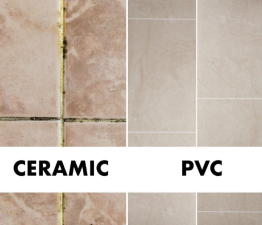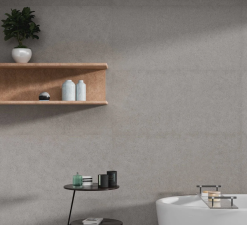Are PVC Panels a Better Option Than Tiles?
With the development of the building materials industry, the variety of flooring materials is expanding. While ceramic tiles have a long history, PVC flooring has seen rapid growth in recent years.
With the development of the building materials industry, the variety of flooring materials is expanding. While ceramic tiles have a long history, PVC flooring has seen rapid growth in recent years.
Advantages of PVC wall panels:
- Superior material properties: PVC wall panels offer excellent waterproof and moisture-resistant properties, adapting to a variety of environments.
- Convenient installation: PVC wall panels are lightweight and easy to install, significantly reducing renovation time.
- Environmentally friendly: PVC wall panels are recyclable and environmentally friendly.
- Highly decorative: A wide selection of colors and patterns caters to diverse decorative needs.

Visual Effects and Aesthetics:
PVC flooring stands out for its unique aesthetic and durability. Its clear wood grain texture not only reflects personal style, but also offers excellent color and softness, creating a welcoming and comfortable feel. PVC flooring also offers a wide variety of patterns and designs.
Safety and Environmental Performance:
The surface friction coefficient of floor tiles is lower than that of PVC flooring, making it more slippery. In homes, especially with elderly or children, this characteristic of floor tiles can pose a significant safety risk. Therefore, from a safety perspective, floor tiles may not be the ideal choice. In contrast, PVC flooring, with its excellent environmental performance, comfort, affordability, and stylish design, has become an ideal alternative to non-degradable ceramic tiles. It not only solves the waste problem associated with secondary renovations, but also saves space and adds a new dimension to low-carbon and environmental protection.
Disadvantages of ceramic tiles:
- Fragility and cracking: Ceramic tiles are brittle, requiring careful installation, and once damaged, they are difficult to repair.
- High water absorption: Ceramic tiles have a high water absorption rate and easily absorb moisture in humid environments, causing mold to form on the surface.
- Heavy weight: Ceramic tiles are heavy, making installation more laborious and time-consuming.

Detailed explanation:
PVC wall panels are a new type of wall decoration material that are waterproof, moisture-resistant, environmentally friendly, and easy to install. They are suitable for a variety of environments, especially humid ones such as bathrooms and toilets. PVC wall panels are easy to install, significantly shortening renovation time and reducing construction costs. PVC wall panels also come in a wide variety of colors and patterns to suit various decorative needs.
In contrast, while traditional ceramic tiles are also a common wall decoration material, they have some significant disadvantages. Ceramic tiles are brittle and easily chipped, requiring special care during installation. Furthermore, they have a high water absorption rate and are prone to absorbing moisture in humid environments, leading to mold growth. Furthermore, ceramic tiles are heavy, making installation more laborious and time-consuming.
Thus, considering a combination of material performance, ease of installation, environmental friendliness, and decorative appeal, PVC wall panels offer advantages over ceramic tiles and are a superior choice for wall decoration.
